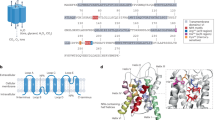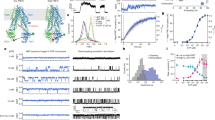Abstract
Cystic fibrosis is the most common fatal genetic disease affecting Caucasians and is perhaps best characterized as an exocrinopathy involving a disturbance in fluid and electrolyte transport1. A high NaCl concentration in the sweat is characteristic of patients with this disease; the basic physiological reason for this abnormality is unknown. We have microperfused isolated sweat ducts from control subjects and cystic fibrosis patients, and report here results which suggest that abnormally low Cl− permeability in cystic fibrosis leads to poor reabsorption of NaCl in the sweat duct, and hence to a high concentration of NaCl in the sweat.
This is a preview of subscription content, access via your institution
Access options
Subscribe to this journal
Receive 51 print issues and online access
$199.00 per year
only $3.90 per issue
Buy this article
- Purchase on SpringerLink
- Instant access to full article PDF
Prices may be subject to local taxes which are calculated during checkout
Similar content being viewed by others
References
Mangos, J. A. in Physiology of Membrane Disorders (eds. Andreoli, T. E., Hoffman, J. F. & Fanestil, D. D.) 941–954 (Plenum, New York, 1978).
Quinton, P. M. Pflügers Arch. ges. Physiol. 391, 309–313 (1981).
Knowles, M., Gatzy, T. & Boucher, R. New Engl. J. Med. 305, 1489–1495 (1981).
Schulz, I. J. J. clin. Invest. 48, 1470–1477 (1969).
Quinton, P. M. in Fluid and Electrolyte Abnormalities in Exocrine Glands in Cystic Fibrosis (eds Quinton, P. M., Martinez, J. R. & Hopfer, U.) (San Francisco Press, 1982).
Goldman, D. E. J. gen. Physiol. 27, 37–60 (1943).
Hodgklin, A. L. & Katz, B. J. Physiol. Lond. 108, 37–77 (1949).
Author information
Authors and Affiliations
Rights and permissions
About this article
Cite this article
Quinton, P. Chloride impermeability in cystic fibrosis. Nature 301, 421–422 (1983). https://doi.org/10.1038/301421a0
Received:
Accepted:
Issue Date:
DOI: https://doi.org/10.1038/301421a0



